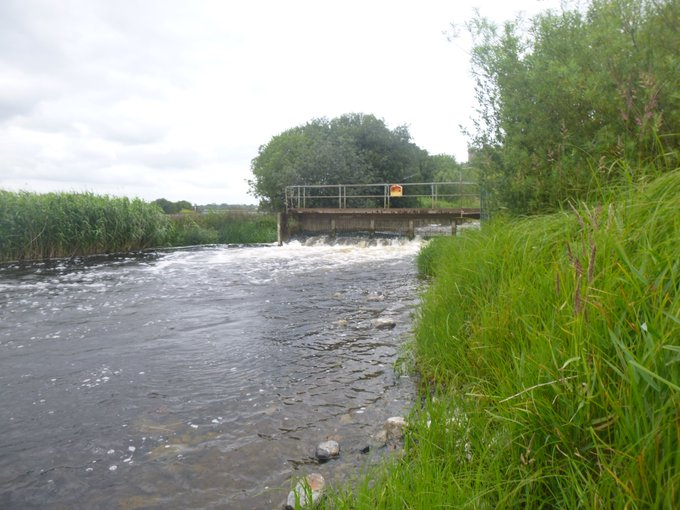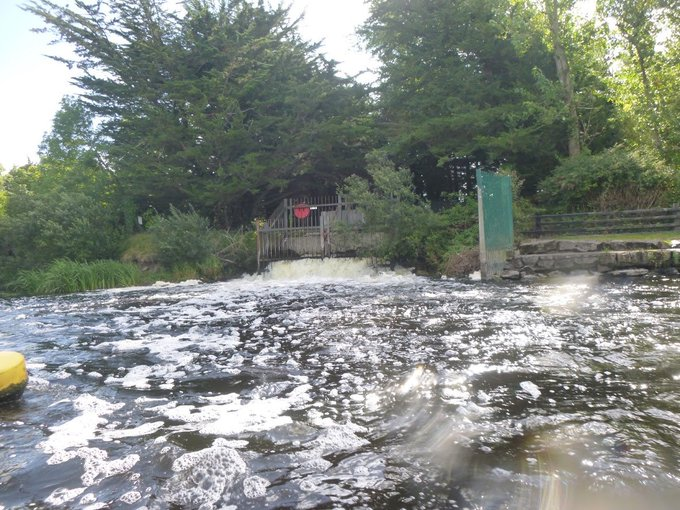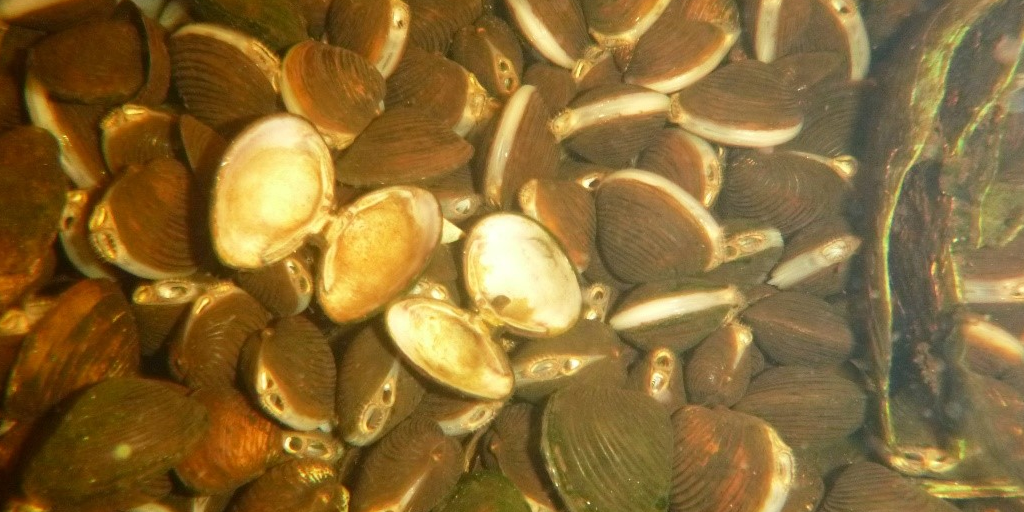This post by Maureen and Marcin is based on their paper in the November 2019 issue of Science of The Total Environment, “Thermal effluents from power plants boost performance of the invasive clam Corbicula fluminea in Ireland’s largest river”. (Penk & Williams, 2019)
The River Shannon is Ireland’s largest river, with a storied biological and cultural history. The River drains 20% of the country, running through the centre of the midlands while providing a source of power and water. The machinery used to generate power in most power plants, whether they’re nuclear, peat-fueled, or coal-powered plants, often heats up to extreme temperatures when the plants are running. To try to keep the machinery cool, many power plants today take water from local sources, use it to cool the generators, and then put it back out into the original source. Two of Ireland’s largest power plants, the Lough Ree Power Station and the West Offaly Power Station, use water from the River Shannon in this way, putting the water back into the river up to 10°C hotter than the River water. The warm water can change the structure of the aquatic community near the output, and our study shows that this increase in temperature gives a significant boost to the invasive Asian clam, Corbicula fluminea.

The Asian clam is a successful invasive species that is originally from the warm waters in China, Korea, southeastern Russia, and the Ussuri Basin. Now that it is present in Ireland, it is likely to out-compete most other animals that live in the River Shannon, including other species that underpin the aquatic food web. We looked at the population of the clams near the warm water outputs and in unheated areas. The invasive clams were more than 4 times heavier in the warm water areas, with about 2 times bigger shell lengths. In addition to making the invasive clams larger, we found that the Asian clam is able to take over most of the space along the bottom of the River, reaching a 13x higher density in areas with the warm water input. Interestingly, in the heated areas, we found a trade off between shell size and flesh weight, where the clams seem to have less flesh per unit shell length when it is warm.
The warmed water is discharged year-round, which gives the clams a thermal refuge in the winter months especially. The higher temperature water will allow them to reproduce for up to 5 times longer in the year, and to guard them against cold snaps in the colder Irish winter the colder Irish winter. We believe the warmed areas are likely used as stepping-stones and propagule banks for further proliferation of C. fluminea and other warm-adapted invaders; we estimated that there are around staggering 20 million of C. fluminea within these two warm water plumes.

One of the biggest concerns raised by this study is the clear evidence that the clams thrive in warmer waters. As our climate changes, the whole River is expected to increase in temperature, and it is likely that the clams will gain a big boost from the warmer temperatures. Climate change will almost certainly allow the clams to thrive in many more places along the River, and we need to focus on ways to address the challenges climate change will present. The degree of river heating within the warm water plumes exceeds current climate warming prognoses and so the dramatic level of infestation in the plumes may not be fully representative of what the river ecology will look like in a warmer world. However, it likely illustrates ecosystem trajectory as the world gets hotter. How can we stop the spread of this species? The Lough Ree Power Station has been temporarily closed due to violations of their EPA license, as they were discharging the water more than 10°C warmer than the River water. Altering the discharge of these power plants, so warm water isn’t directly entering the River, could have major positive benefits. There are also a number of steps every person can take to limit the spread of the invasive clams. Maintaining and using the cleaning stations along the River Shannon to rinse your gear, including fishing poles, waders, and wellies, can help limit the spread of the clams. It’s also important to follow the clean-check-dry rule when moving boats between different water areas.
More Coverage of this paper:
- The Sunday Times article: ESB power plants give refuge to invasive Asian clams on the Shannon. 11 August 2019.
- Newstalk Radio interview with M. Williams: The River Shannon is experiencing an abundance of clams … 14 August 2019, Moncrieff: 00:35:44–00:42:20.
- Or read the full paper here: Penk and Williams (2019), “Thermal effluents from power plants boost performance of the invasive clam Corbicula fluminea in Ireland’s largest river.” Sci Total Environ 693 https://doi.org/10.1016/j.scitotenv.2019.07.352
About the Authors
Maureen Williams is a postdoctoral researcher in the Wood Lab at the University of Washington. She completed her PhD with Dr. Ian Donohue and Prof. Celia Holland in the Zoology Department of Trinity College Dublin, where she studied the impact of behaviour-manipulating parasites on their ecosystems. Find out more about her research here:
Website | Maureenannewilliams.weebly.com
Twitter | @modubs11
ResearchGate | Profile
LinkedIn | Profile
Google Scholar | Profile
Dr. Marcin Penk is a Research & Teaching Fellow in Jay Piggott‘s group in the Department of Zoology, Trinity College Dublin. He is an aquatic biologist and community ecologist, principally interested in how environmental contexts shape biological communities and influence ecosystem functioning. Find out more about his research here:

